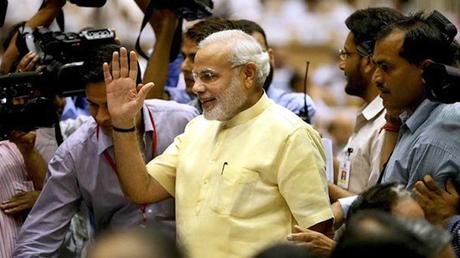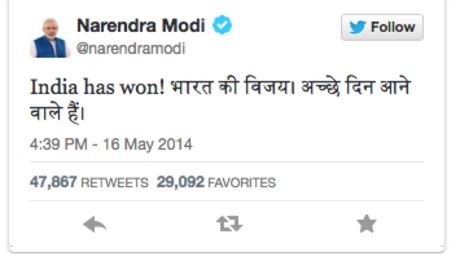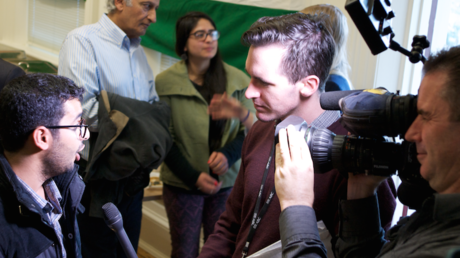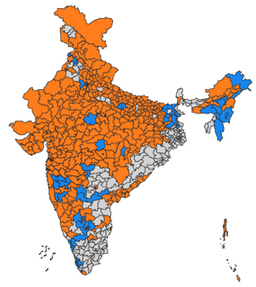
The new political map of India is BJP trademark saffron as far as the eye can see, graphically exposing the depth of the humiliation of the former ruling Congress party (in blue), which was reduced to just 44 seats in its own right, 59 in total with its allies, and an overall loss of 175 seats. Nonetheless yesterday the Congress refused to accept the resignations of its two most senior figures, Sonia and Rahul Gandhi.
|
|
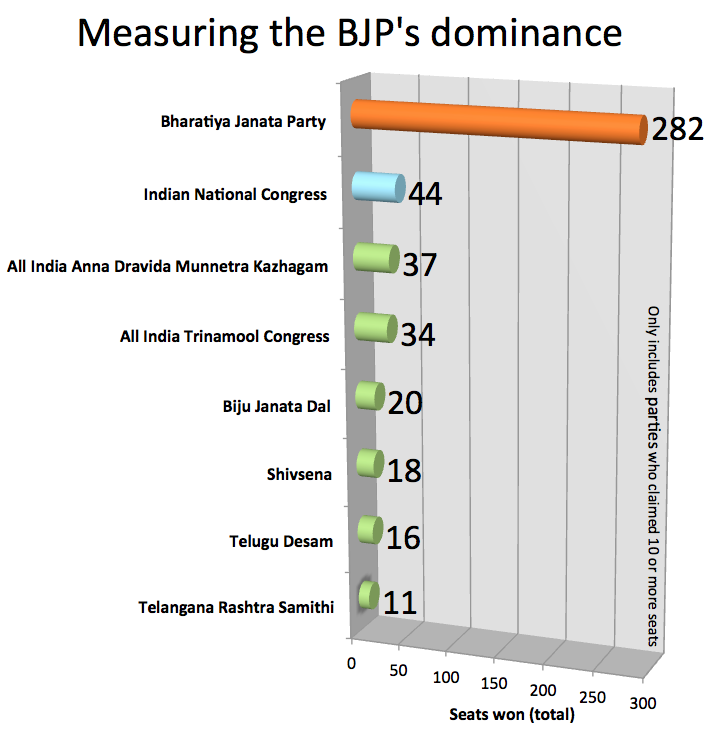 |
Narendra Modi, who will soon be sworn in as India's 16th Prime Minister, has secured the biggest haul of seats since 1984, and the first majority government after 25 years of coalitions.
The BJP required 272 seats to have a majority, and achieved it comfortably with 282 seats in its own right, and 336 with its allies, an overall boost of 195 on the last election. |
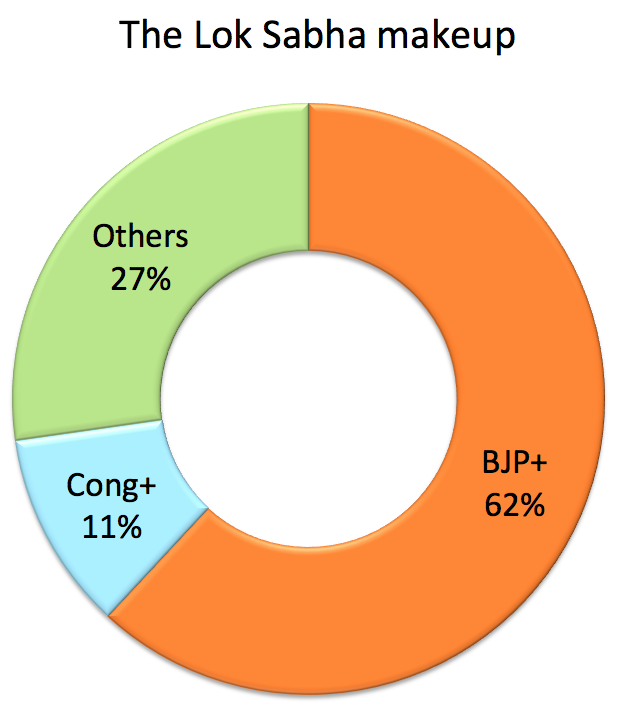 |
The 16th Indian Lok Sabha will have a record number of women leaders - 61 compared to 59 in the last Parliament. But 89 per cent of the 543 seats are still held by men. The Lok Sabha also appears to be getting older, despite the country's rising youth demographic, with only 71 of the representatives elected aged under 40 years. Almost half the MPs are aged over 55. |
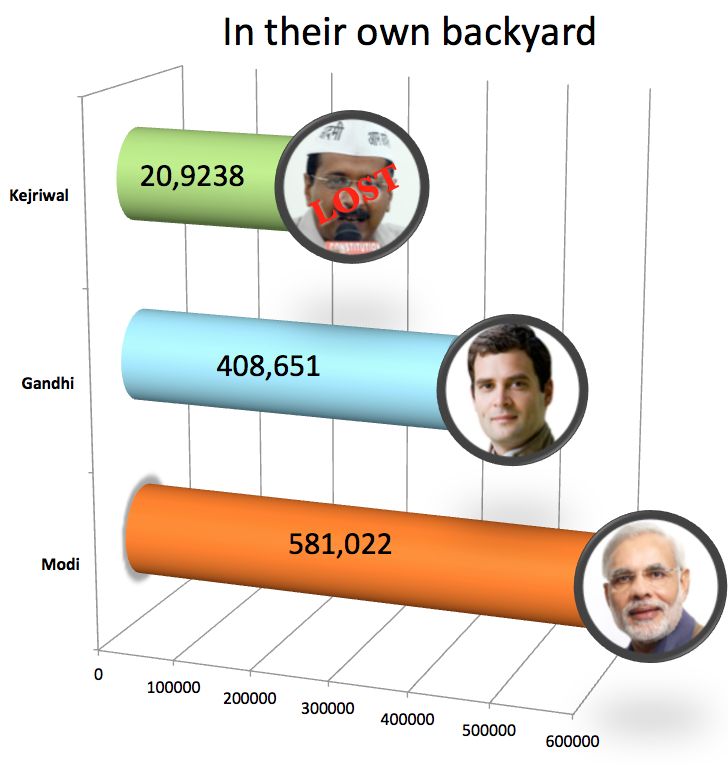 |
Aam Aadmi Party chief Arvind Kejriwal was categorically trounced by the man who is set to be India's next Prime Minister, Narendra Modi, in the contest in Varanasi. His fledgling anti-corruption party, which appeared to have captured the imagination of many disenfranchised voters, won a lone seat in Punjab. But the rookie party has shown that it is not a write-off, according to commentators. It was the second party in many seats in states like Delhi and Punjab. |


